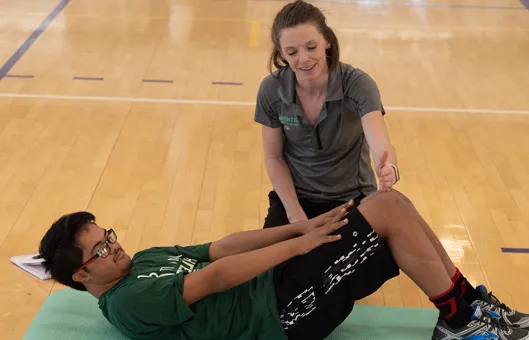Ab Exercises
Supine Reverse Marches
- Target Body Part:
- Abs
- Equipment:
- No Equipment
- Difficulty:
-
 Beginner
Beginner
Step 1
Starting Position: Lie flat on your back on the floor / mat in a bent-knee position with feet placed firmly on the floor, arms outstretched to your sides at shoulder level and palms facing upwards. Stiffen (“brace”) your abdominal muscles to stabilize your spine (maintain the small natural curve in your low back), depress and retract your scapulae (pull shoulders back and down) and attempt to hold these positions throughout the exercise.
Step 2
Gently exhale and slowly lift one leg off the floor, moving your knee towards your trunk, while maintaining a 90-degree bend at the knee. DO NOT extend the knee during this movement). Continue moving until the thigh reaches or comes close to a position where it aligns vertically to the floor. DO NOT go beyond this position. Hold this position for 5 – 10 seconds then slowly return your leg to the floor, completing 2 – 4 repetitions and repeating with the opposite leg.
Step 3
The goal of this exercise is to control the position of your low back during leg movements. Movement of the thigh past vertical will flatten your back, thus changing the position of your low back. If necessary, place one hand or a rolled up towel into the small of your back to monitor for any changes in the position of your low back during the movement.
Step 4
EXERCISE VARIATION: This exercise can become more dynamic by performing slow, controlled movements to complete 1 set of 5 - 10 repetitions with each leg, holding the elevated position for 1 - 2 seconds.
The intensity can be progressed by incorporating simultaneous overhead unilateral (single-arm) or bilateral (both arms) movements,
To maximize the benefits of this exercise and reduce the potential for injury, it is important to control movement speed and monitor changes in your low back carefully.
Share:

Inclusive Fitness Training
Create fitness opportunities for people with intellectual disabilities!
Learn MoreCourse!




